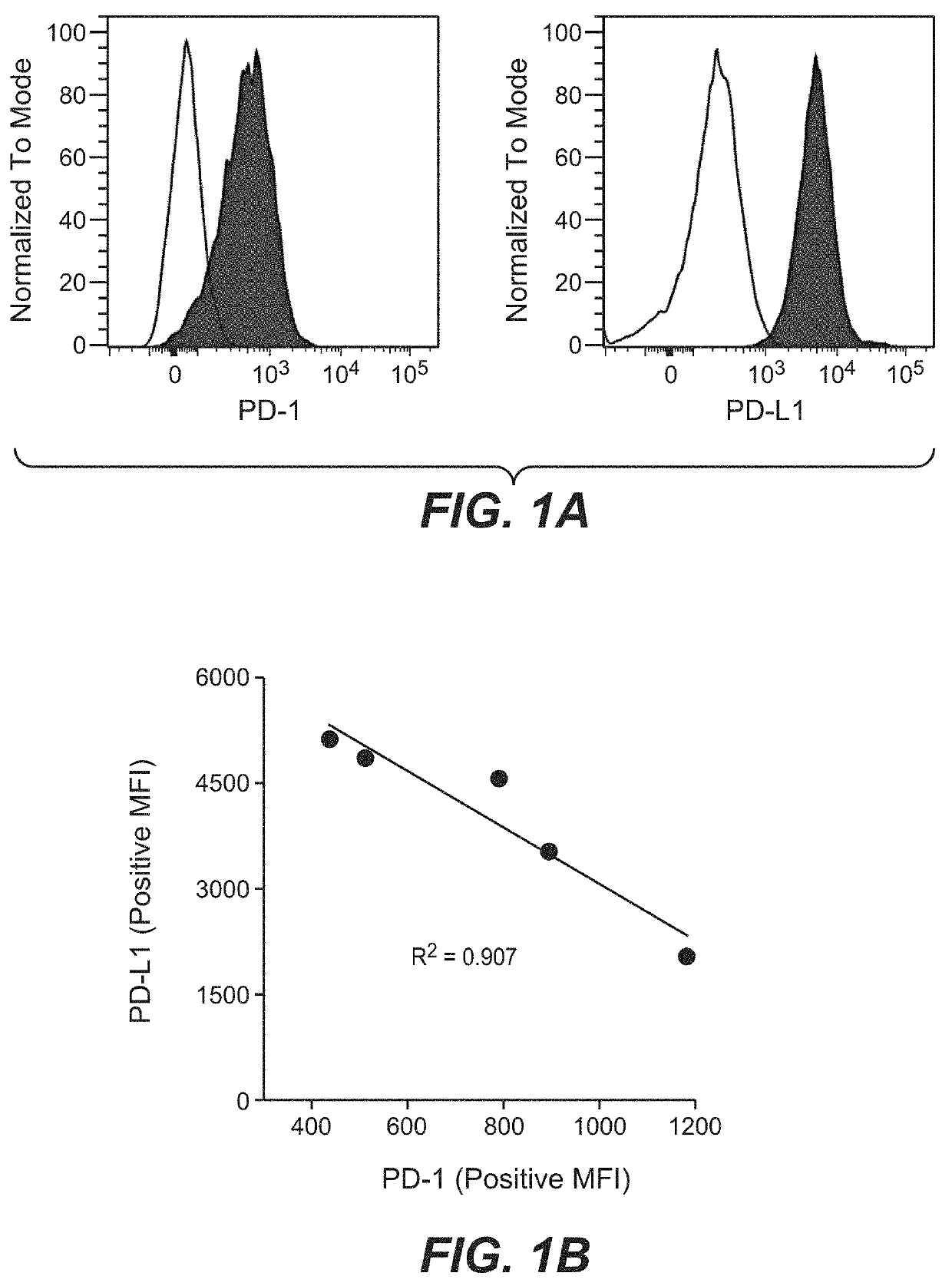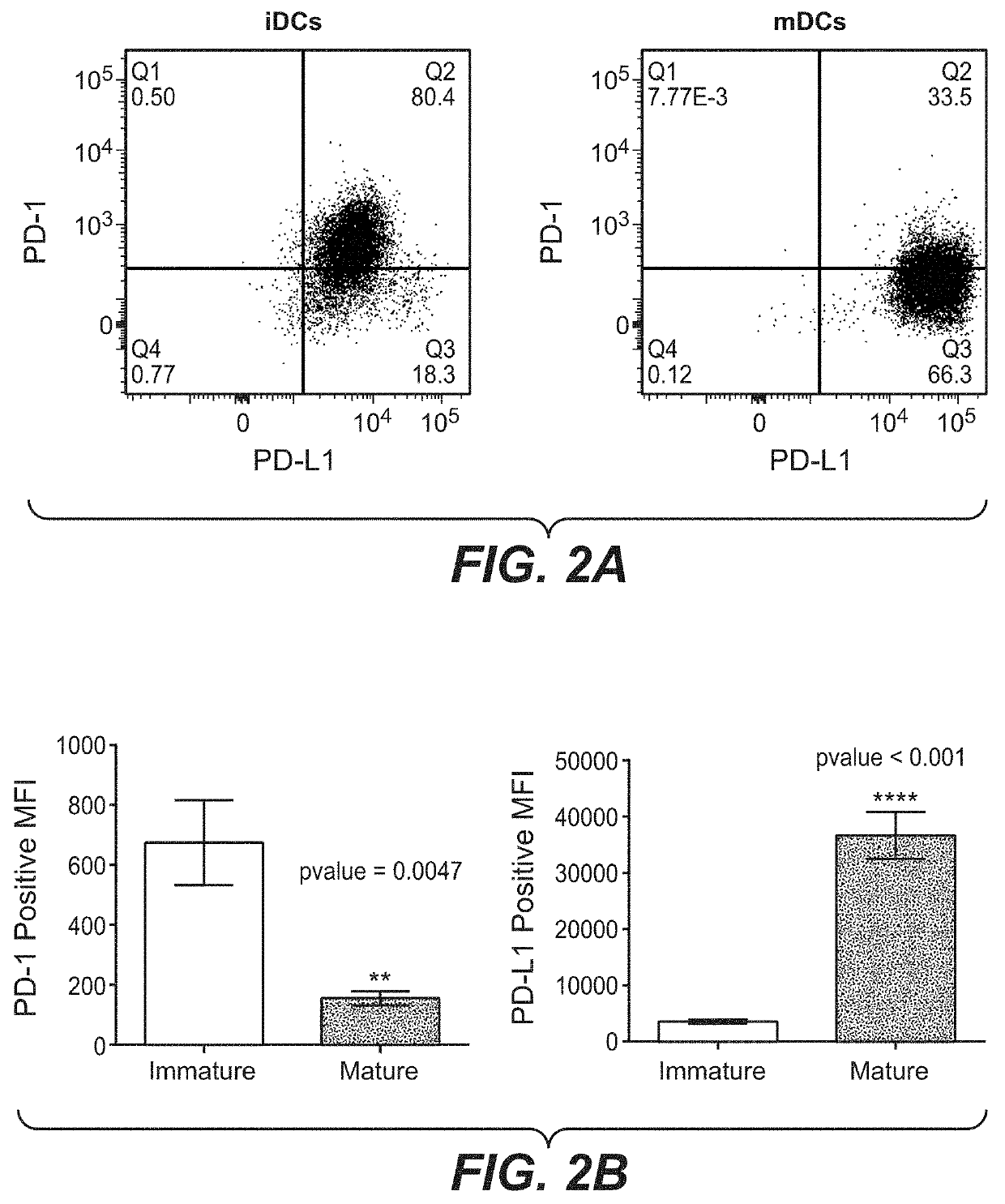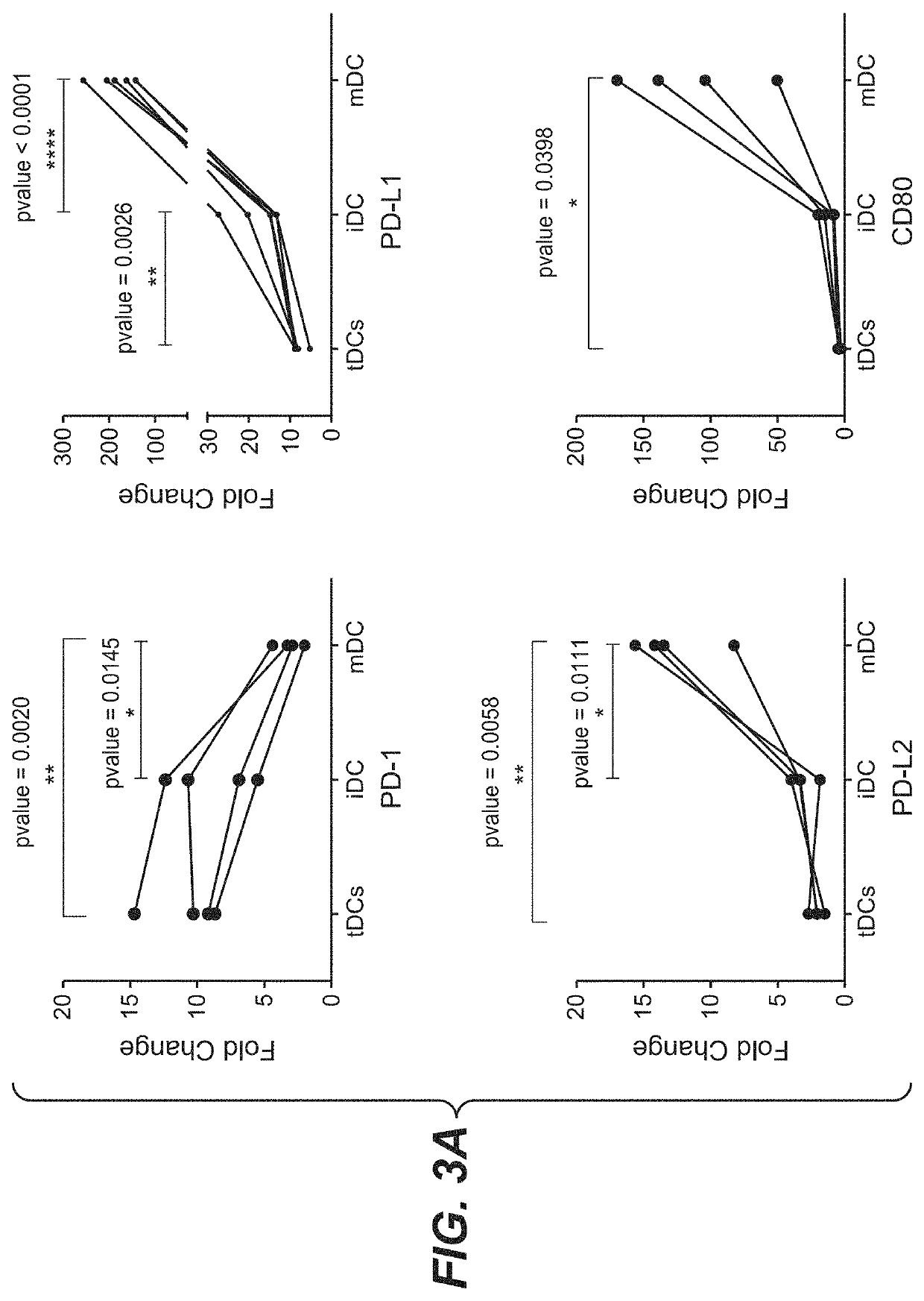Predicting response to pd-1 axis inhibitors
- Summary
- Abstract
- Description
- Claims
- Application Information
AI Technical Summary
Benefits of technology
Problems solved by technology
Method used
Image
Examples
example 1
PD-L1 are Negatively Correlated on Human DCs
[0159]To address the potential regulation of PD-1 and its ligands on human DCs, monocyte-derived DCs were generated using the classical method. Briefly, Peripheral Blood Mononuclear Cells (PBMCs) were isolated from buffy-coats (Blutspende, Schlieren) from healthy human donors, using Ficoll-Paque™ Plus (GE Healthcare, #17-1440-03) density gradient. Rings of PBMCs were collected and washed with PBS two times by centrifugation (5′ at 763 g; 5′ at 600 g). A lysis was conducted using 10 mL of BD Pharm Lyse™ (BD Biosciences, #555899) diluted at 1× with sterile water and incubated 1.5 minute at room temperature. Two washes with Phosphate-buffered saline 1× (PBS; Gibco® by live Technologies™, #20012-019) were conducted by centrifugation (8′ at 135 g). Cells number and quality were evaluated using Cell counter (Beckman coulter). Separate unrelated donors were used for each independent experiment. Monocytes were isolated from fresh PBMCs by negative...
example 2
nt of DCs in Tumor-Bearing Mice to Respond to PD-L1 Blockade
[0166]To confirm the physiological relevance of above in vitro findings, we tested the anti-PD-L1 activities in in vivo animal models. We first set up an orthotopic tumor model of C57BL / 6J female mice where PanC02-H7 (mouse pancreatic carcinoma cells originally obtained from University of Texas M. D. Anderson Cancer Center under a MTA) (1×105 cells) were injected into the pancreas. Seven days later, an anti-PD-L1 Ab (10 mg / kg, murine IgG1, clone 6E11, Genentech) was administered intravenously (i.v.), and mice were harvested at 3 days after the treatment. We analyzed the CD11c+F4 / 80− DCs in the spleen and draining lymph nodes, and found that mice received anti-PD-L1 Ab showed increased frequency of DCs as compared to the vehicle group (FIGS. 5A-5B). Furthermore, DCs (gated on CD11c+ cells) showed higher expression of CD86 (FIG. 5C), a marker of activation / maturation. These data suggest that anti-PD-L1 Ab directly activates D...
example 3
ranscripts Predict Clinical Benefit in Patients with Renal Cell Carcinoma Treated with Atezolizumab
[0168]We hypothesized that patients with DC abundance may respond to PD-L1 blockade leading to beneficial effect in patients who received the treatment. We analyzed 56 patients with renal cell carcinoma who received Atezolizumab in a Phase I clinical trial (NCT01375842) (http: / / www.clinicaltrials.gov / ct2 / show / NCT01375842?term=NCT01375842&rank=1). This study was sponsored by Genentech Inc., a member of the Roche Group, which provided the study drug. The protocol and its amendments were approved by the relevant institutional review boards or ethics committees, and all participants provided written informed consent. This study was conducted in accordance with the Declaration of Helsinki and International Conference on Harmonization Guidelines for Good Clinical Practice. In total, 56 patients were analyzed. Based on the “Best Confirmed Overall Response by the Investigator” we observed 6 re...
PUM
 Login to View More
Login to View More Abstract
Description
Claims
Application Information
 Login to View More
Login to View More - R&D
- Intellectual Property
- Life Sciences
- Materials
- Tech Scout
- Unparalleled Data Quality
- Higher Quality Content
- 60% Fewer Hallucinations
Browse by: Latest US Patents, China's latest patents, Technical Efficacy Thesaurus, Application Domain, Technology Topic, Popular Technical Reports.
© 2025 PatSnap. All rights reserved.Legal|Privacy policy|Modern Slavery Act Transparency Statement|Sitemap|About US| Contact US: help@patsnap.com



